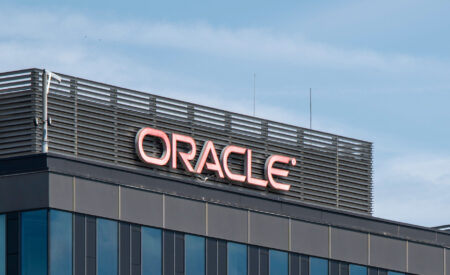While many factors no doubt contributed significantly to Snowflake’s dazzling 110% Q3 revenue growth, CEO Frank Slootman says that the driving factor behind that blowout performance was the direct-to-consumer craze sweeping the world.
On my weekly Cloud Wars Top 10 rankings, Snowflake is #9. A couple of months ago, it jumped past IBM and pushed IBM down to the #10 spot.
Armed with a legendary track record after highly successful top-level roles at ServiceNow, EMC, and Data Domain, Slootman is typically a plain-spoken executive with a keen grasp of his own company’s numbers and an even keener instinct for what the marketplace wants and needs.
So in Snowflake’s Dec. 1 earnings call, it was a bit jarring to hear Slootman deliver this soaring bit of commentary about what is fueling the ultra-steep trajectory Snowflake is on: “The overarching backdrop for Snowflake is the inexorable march toward direct-to-consumer operations and full-bloom digital transformation.”
While the transformation thing has been beaten to a pulp for the past few years, I have not heard any other CEO of a major tech firm cite the “direct-to-consumer” phenomenon with anything even remotely close to the prominence offered by Slootman.
Now, if a company delivers so-so results and the CEO tries to paper over that lackluster performance with high-fallutin’ but calorie-free rhetoric, it’s generally pretty easy—and fully appropriate—to call BS. But when a company delivers 110% revenue growth in a wickedly competitive market and is jarringly disrupting much larger competitors, then the CEO of that company has earned the right to be heard.
And not just heard, but listened to—closely.
Building on that “inexorable march” comment cited above, Slootman said, “Enterprises have all grown acutely aware of just how much they are relying on data operations, data analytics, and data science. Today, data is becoming the beating heart of the modern enterprise.”
And for Snowflake, that throbbing heart is powering the march to a leading position in the new and powerful realm of data clouds, where the good stuff that business leaders have wanted to badly for so long seems finally to be at hand.
“The race is on to lay the foundation for digital data-driven infrastructure,” Slootman said, “and Snowflake is and will continue to be a critical enabler of this journey.”
A world-changing phenomenon: direct to consumer
During the call, Slootman came back several times to the “direct to consumer” dynamic that he said has been the animating force behind Snowflake’s meteoric growth. (With that 110% increase, product revenue for the 3 months ended Oct. 31 spiked to $312 million.)
And to showcase what that means, here are a few excerpts from Slootman on the power and potential of this direct-to-consumer phenomenon from the Dec. 1 earnings call.
“Rippling through the entire economy”
“It’s really rippling through the entire economy, and you’ve got to view it in the context of how the whole world going direct to consumer, even in industries where people have historically not been direct-to-consumer.
“And obviously that triggers enormous investments and people trying to get up to speed on data operations, data science, and being able to run a real data-driven enterprise. And in order to do that, they need to have very, very, very refined data enrichment strategies to really tune and optimize and make these relationships work.”
The need to “own your own data”
“What’s fueling this is the enormous focus on data sharing and being able to enrich their data with attributes that come from other sources. The ability to own your own data as an institution, as an enterprise, and to fully operationalize and mobilize all that data is going to become incredibly important. It’s all changing, and the interaction method and becoming digital—this is just a real tailwind for companies like Snowflake.”
Cloud natives fully embrace direct to consumer
“We shouldn’t view things in the historical way that, you know, the money is going to come from Fortune 500 companies because this is absolutely not the case. You would be stumped if you were to look at the number of customers we have who are not Fortune 500 and at how high their revenue contribution is.
“And that’s because these are newer enterprises that have born in the cloud and are digital and are direct-to-consumer-oriented, and they have a very different culture toward data and a very different orientation. They will definitely feature very, very prominently in our business mix. Now, that doesn’t mean that Fortune 500 isn’t important—obviously it is. But the adoption by these traditional enterprises is often not as fast as the newer entities that we’re dealing with.”
Industry-specific solutions are inextricably tied to direct-to-consumer business
“One of the reasons why verticalization is such an important trend is that it has very little to do with legacy workloads and it has everything to do with preparing companies for their digital direct-to-consumer futures. That’s when they need to really mobilize data, monetize data, and make data really the core of what they’re doing.”
Investing in direct-to-consumer: a necessary sticker-shock
“Some of our large banking customers went from computing loan rates on a monthly basis to doing it every night because they could make a business case for it. Does it cost money? Yes, it costs money. So in the beginning people have sticker shock—yes—because their bill goes from X to 2X to 10X or whatever but at the same time we are really resetting what is ‘normal’ and what is appropriately spent for this class of computing.
“What is going on now is very different than what it historically has been because of (a) what we’re now capable of but also (b) the necessity given the comments we made earlier about the trend of direct-to-consumer and full-on digital transformation.
“You can choose to sit on your heels and wait it out, but, you know, I wouldn’t recommend that.”








